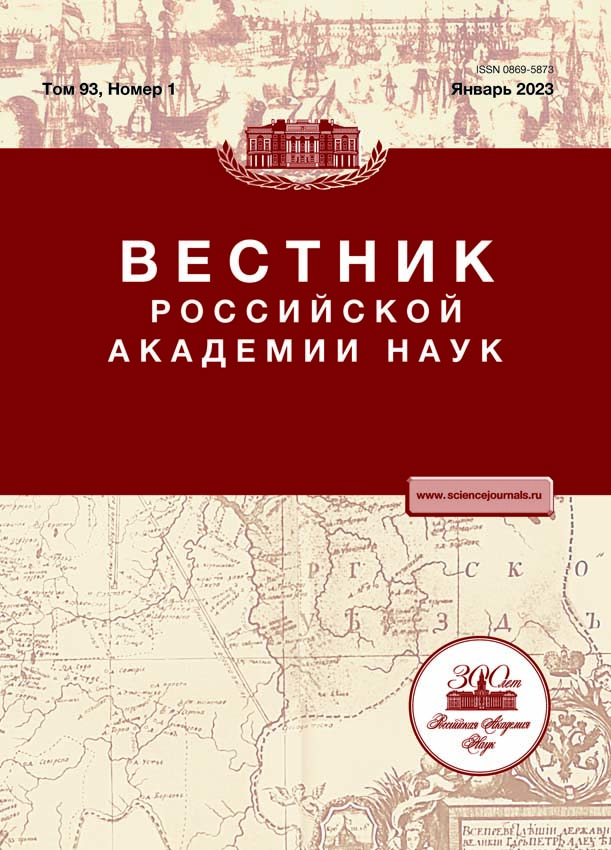Long-term demographic forecasting
- Авторлар: Makarov V.L.1, Bakhtizin A.R.1, Hua L.2, Jie W.3, Zili W.4, Sidorenko M.Y.5
-
Мекемелер:
- Central Economics and Mathematics Institute (CEMI), Russian Academy of Sciences
- Shanghai International Studies University (SISU)
- Center for Economic and Social Integration and Forecasting, Chinese Academy of Social Sciences (CASS)
- Guangzhou Milestone Software Co., Ltd.
- State Academic University for the Humanities (GAUGN)
- Шығарылым: Том 93, № 1 (2023)
- Беттер: 21-35
- Бөлім: ИЗ РАБОЧЕЙ ТЕТРАДИ ИССЛЕДОВАТЕЛЯ
- URL: https://journals.rcsi.science/0869-5873/article/view/140592
- DOI: https://doi.org/10.31857/S0869587323010048
- EDN: https://elibrary.ru/EMYUIN
- ID: 140592
Дәйексөз келтіру
Толық мәтін
Аннотация
The results of the latest demographic forecasts from the world’s leading specialized centers (United Nations Population Division, the Wittgenstein Center for Demography and Global Human Capital, the Institute for Health Metrics and Evaluation) are considered, demonstrating a certain bias in favor of individual countries and their calculation methods. The second part of this article provides a description of a digital twin of the planet’s demographic system constructed by a Chinese−Russian team and implemented in China’s national supercomputer center. In addition, the results of some calculations carried out using this tool are described.
Негізгі сөздер
Авторлар туралы
V. Makarov
Central Economics and Mathematics Institute (CEMI), Russian Academy of Sciences
Email: vestnik.ran@yandex.ru
Moscow, Russia
A. Bakhtizin
Central Economics and Mathematics Institute (CEMI), Russian Academy of Sciences
Email: vestnik.ran@yandex.ru
Moscow, Russia
Luo Hua
Shanghai International Studies University (SISU)
Email: vestnik.ran@yandex.ru
Shanghai, China
Wu Jie
Center for Economic and Social Integration and Forecasting, Chinese Academy of Social Sciences (CASS)
Email: vestnik.ran@yandex.ru
Guangzhou, China
Wu Zili
Guangzhou Milestone Software Co., Ltd.
Email: vestnik.ran@yandex.ru
Guangzhou, China
M. Sidorenko
State Academic University for the Humanities (GAUGN)
Хат алмасуға жауапты Автор.
Email: vestnik.ran@yandex.ru
Moscow, Russia
Әдебиет тізімі
- Alkema L., Raftery A.E., Gerland P. et al. Probabilistic Projections of the Total Fertility Rate for All Countries // Demography 1. August 2011. № 48 (3). P. 815–839. https://doi.org/10.1007/s13524-011-0040-5
- World Population Prospects 2022: Methodology of the United Nations population estimates and projections. United Nations, Department of Economic and Social Affairs, Population Division (UN DESA/POP/2022/TR/NO. 4). https://population.un.org/ wpp/Publications/Files/WPP2022_Methodology.pdf (дата обращения 24.09.2022).
- Ševčíková H., Alkema L., Liu P. et al. (2022) bayes TFR: Bayesian Fertility Projection. R Package and documentation version 7.1-1. https://cran.r-project.org/ web/packages/bayesTFR
- World Population Prospects 2019: Methodology of the United Nations population estimates and projections. United Nations, Department of Economic and Social Affairs, Population Division (ST/ESA/SER.A/425). https://population.un.org/wpp/Publications/Files/ WPP2019_Methodology.pdf
- Demographic and Human Capital Scenarios for the 21st Century: 2018 assessment for 201 countries // W. Lutz, A. Goujon, Samir KC et al. (eds.). European Commission, Joint Research Centre, Publications Office of the European Union. Luxembourg, 2018. https://doi.org/10.2760/41776, EUR 29113; http://pure.iiasa.ac.at/id/eprint/15226/1/lutz_et_al_2018_ demographic_and_human_capital.pdf
- Adam D. (2021): How far will global population rise? Researchers can’t agree // Nature. 2021. № 597. P. 462–465. https://doi.org/10.1038/d41586-021-02522-6
- Vollset S.E., Goren E., Yuan C. et al. (2020): Fertility, mortality, migration, and population scenarios for 195 countries and territories from 2017 to 2100: a forecasting analysis for the Global Burden of Disease Study // The Lancet. 2020. V. 396. Is. 10258. P. 1285–1306. https://doi.org/10.1016/S0140-6736(20)30677-2
- Gietel-Basten S., Sobotka T. (2020) Uncertain population futures: Critical reflections on the IHME Scenarios of future fertility, mortality, migration and population trends from 2017 to 2100. https://doi.org/10.31235/osf.io/5syef
- Henning P. (2008): Computational Evolution. https://doi.org/10.1007/978-3-540-70556-7_14
- Makarov V.L., Bakhtizin A.R., Epstein J.M. Agent-based modeling for a complex world. 2nd edition, revised. M.: Scientific publications department, GAUGN, 2022 (a).
- Makarov V.L., Bakhtizin A.R., Epstein J.M. Agent-based modeling for a complex world. Part 1 // Economics and Mathematical Methods. 2022 (б). № 58. P. 5–26. https://doi.org/10.31857/S042473880018970-6
- Макаров В.Л., Бахтизин А.Р., Ильин Н.И. Моделирование и оценка национальной силы России // Экономические стратегии. 2020. № 2 (168). С. 6–19. https://doi.org/10.33917/es-2.168.2020.6-19
- Peng D., Zhenwu Z., Wei C. The Centennial Development Trend of China’s Population Aging) // Population Research. 2005. V. 29. № 6. P. 90–93 (Chinese).
- Zhenwu Z., Jiaju C., Long L. 2015~2100. Future Trends of China’s Population and Aging: 2015~2100) // Population Research. V. 41. № 4. July 2017. P. 60–71 (Chinese).
- Wei Z., Shanjun L., Kai C. Characteristics and Trends of Population Aging in China and Potential Impact on Economic Growth // Quantitative and Technical Economics Research. 2014. № 31 (08). P. 3–20 (Chinese).https://doi.org/10.13653/j.cnki.jqte.2014.08.001
- Bijak J., Higham P.A., Hilton J. et al. (2022): Towards Bayesian Model-Based Demography. Agency, Complexity and Uncertainty in Migration Studies // Methodos Series. 2022. V. 17. Cham: Springer. https://doi.org/10.1007/978-3-030-83039-7
- Bell A.R., Calvo-Hernandez C., Oppenheimer M. Migration, Intensification, and Diversification as Adaptive Strategies // Socio-Environmental Systems Modelling. 2019. № 1. P. 16102. https://doi.org/10.18174/sesmo.2019a16102
- Lim D.K. A Political, Economic and Social Agent Based Model of Migration (MAPES) // UCLA. 2019. ProQuest ID: Lim_ucla_0031D_18154. Merritt ID: ark:/13030/m53n75w7. Retrieved from https://escholarship.org/uc/item/9r82j9gt
- Marini M., Chokani N., Abhari R.S. Agent-Based Model Analysis of Impact of Immigration on Switzerland’s Social Security // Int. Migration & Integration.2019. № 20. P. 787–808 (2019). https://doi.org/10.1007/s12134-018-0631-8
- Klabunde A., Willekens F. Decision-Making in Agent-Based Models of Migration: State of the Art and Challenges // European journal of population = Revue europeenne de demographie. 2016. № 32 (1). P. 73–97. https://doi.org/10.1007/s10680-015-9362-0
- Макаров В.Л., Бахтизин А.Р., Бекларян Г.Л. и др. Агентное моделирование социально-экономических последствий миграции при государственном регулировании занятости // Экономика и математические методы. 2022. Т. 58. № 1. С. 113–130. https://doi.org/10.31857/S042473880018960-5
- Макаров В.Л., Бахтизин А.Р., Сушко Е.Д., Агеева А.Ф. Агент-ориентированный подход при моделировании трудовой миграции из Китая в Россию // Экономика региона. 2017. Т. 13. Вып. 2. С. 331–341.
- Agent-Based Modelling in Population Studies: Concepts, Methods, and Applications / André Grow and Jan Van Bavel (eds). 2017. https://doi.org/10.1007/978-3-319-32283-4
- Макаров В.Л., Нигматулин Р.И., Ильин Н.И. и др. Цифровой двойник (искусственное общество) социально-экономической системы России – платформа для экспериментов в сфере управления демографическими процессами // Экономические стратегии. 2022. № 2 (182). С. 6–19. https://doi.org/10.33917/es-2.182.2022.6-19
- Сайт Отдела населения ООН. https://www.un.org/ development/desa/pd/content/international-migrant-stock
- Caйт City Population. https://www.citypopulation.de/ en/china/cities/
- Burch T.K. (2018): The Cohort-Component Population Projection: A Strange Attractor for Demographers // Model-Based Demography. Demographic Research Monographs. Springer, Cham, 2018. https://doi.org/10.1007/978-3-319-65433-1_10












